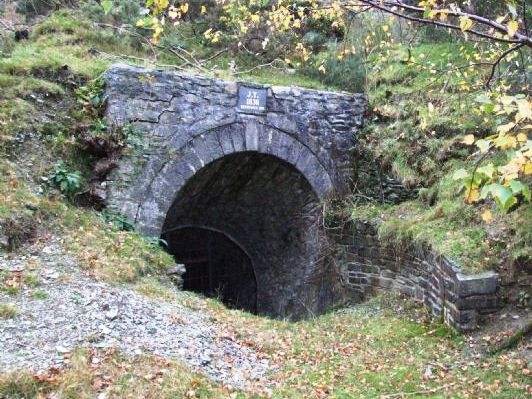The village of Goginan is on the A44, seven miles west of Aberystwyth. The vein runs east-north-east, in Silurian and Ordovician grits, shales and mudstones, from Old Goginan village for two miles.
Already working in the late 16th century when the Society of Mines Royal took it over. It was under the latter’s auspices that Thomas Bushell worked there from 1640 and drove a number of adits. As a royalist, he was forced to quit the mine during the Civil War. It stood idle until the late 1660s when the Company for the Undertaking of Mines worked it along with Bwlch. Workings at this time are said to have reached a depth of 120 feet below the outcrop.
Under the Company of Mines Adventurers of England, between 1698 and 1708, William Waller cleaned out and enlarged some of Bushell’s adits as well as driving new ones. He worked Goginan and the nearby Bwlch, Bryn Pica, Pencraigddu mines, which all had a claimed silver content of 44 oz per ton. The company worked in this area until at least 1744.
For nearly a century the mine was worked spasmodically, with little or no development, until John Taylor & Co. acquired it in 1836. A measure of their success, shares issued at £5 in 1836 were worth £420 two years later. Even by 1850 they were worth £250. Shafts were sunk to 70 fathoms below the deepest adit, and an inclined haulage was driven from near the dressing floors to 60 fathoms below adit.
The 1860s closed with falling lead prices and the Taylors floated the Goginan Co. which worked Goginan between 1868 and 1875. Trading conditions continued to deteriorate four more times until 1886, when the mine closed.
Hughes, S.J.S. The Goginan Mines (British Mining No.35, 1988)
Return to previous page

